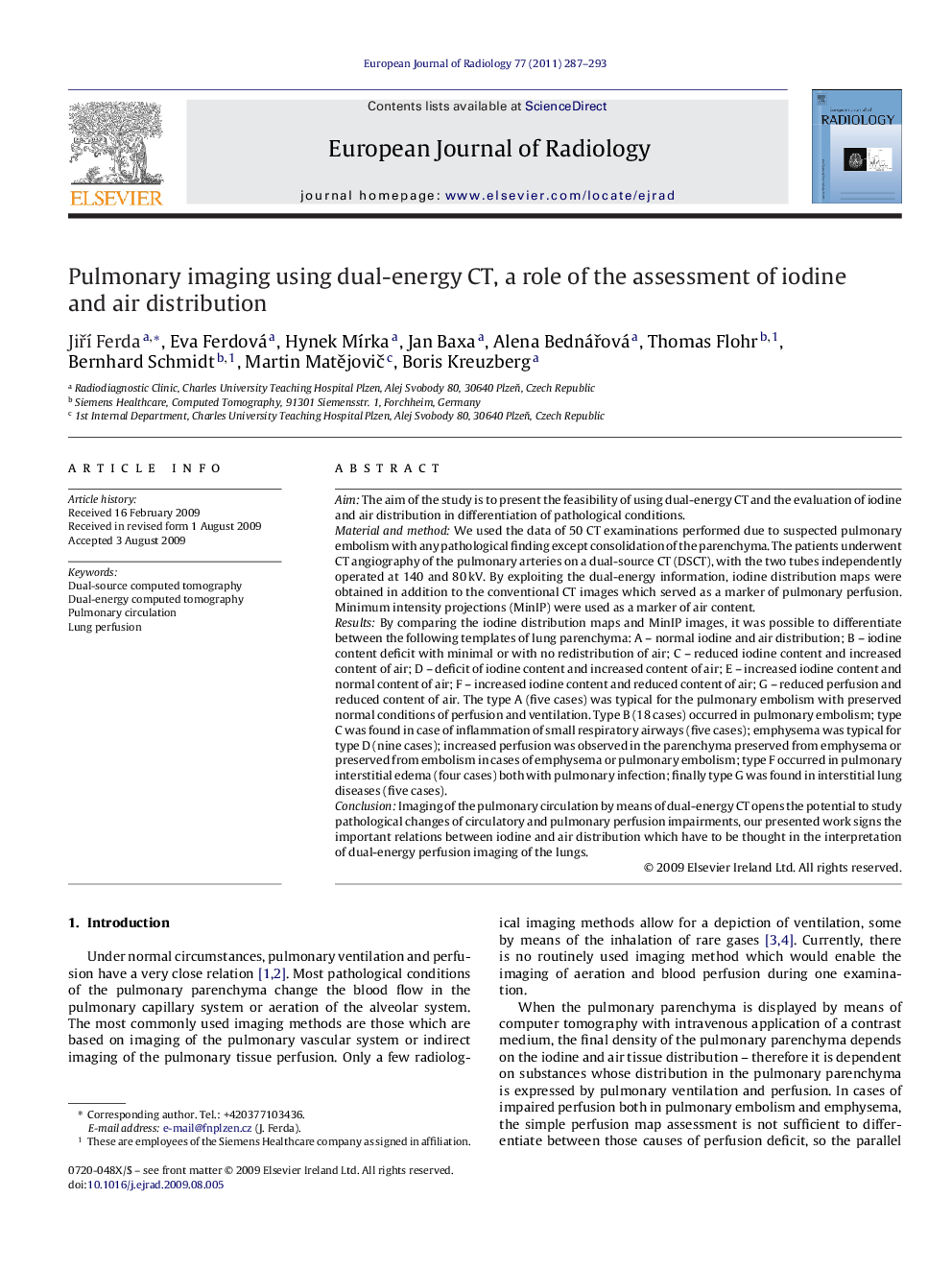| کد مقاله | کد نشریه | سال انتشار | مقاله انگلیسی | نسخه تمام متن |
|---|---|---|---|---|
| 4226595 | 1609806 | 2011 | 7 صفحه PDF | دانلود رایگان |

AimThe aim of the study is to present the feasibility of using dual-energy CT and the evaluation of iodine and air distribution in differentiation of pathological conditions.Material and methodWe used the data of 50 CT examinations performed due to suspected pulmonary embolism with any pathological finding except consolidation of the parenchyma. The patients underwent CT angiography of the pulmonary arteries on a dual-source CT (DSCT), with the two tubes independently operated at 140 and 80 kV. By exploiting the dual-energy information, iodine distribution maps were obtained in addition to the conventional CT images which served as a marker of pulmonary perfusion. Minimum intensity projections (MinIP) were used as a marker of air content.ResultsBy comparing the iodine distribution maps and MinIP images, it was possible to differentiate between the following templates of lung parenchyma: A – normal iodine and air distribution; B – iodine content deficit with minimal or with no redistribution of air; C – reduced iodine content and increased content of air; D – deficit of iodine content and increased content of air; E – increased iodine content and normal content of air; F – increased iodine content and reduced content of air; G – reduced perfusion and reduced content of air. The type A (five cases) was typical for the pulmonary embolism with preserved normal conditions of perfusion and ventilation. Type B (18 cases) occurred in pulmonary embolism; type C was found in case of inflammation of small respiratory airways (five cases); emphysema was typical for type D (nine cases); increased perfusion was observed in the parenchyma preserved from emphysema or preserved from embolism in cases of emphysema or pulmonary embolism; type F occurred in pulmonary interstitial edema (four cases) both with pulmonary infection; finally type G was found in interstitial lung diseases (five cases).ConclusionImaging of the pulmonary circulation by means of dual-energy CT opens the potential to study pathological changes of circulatory and pulmonary perfusion impairments, our presented work signs the important relations between iodine and air distribution which have to be thought in the interpretation of dual-energy perfusion imaging of the lungs.
Journal: European Journal of Radiology - Volume 77, Issue 2, February 2011, Pages 287–293